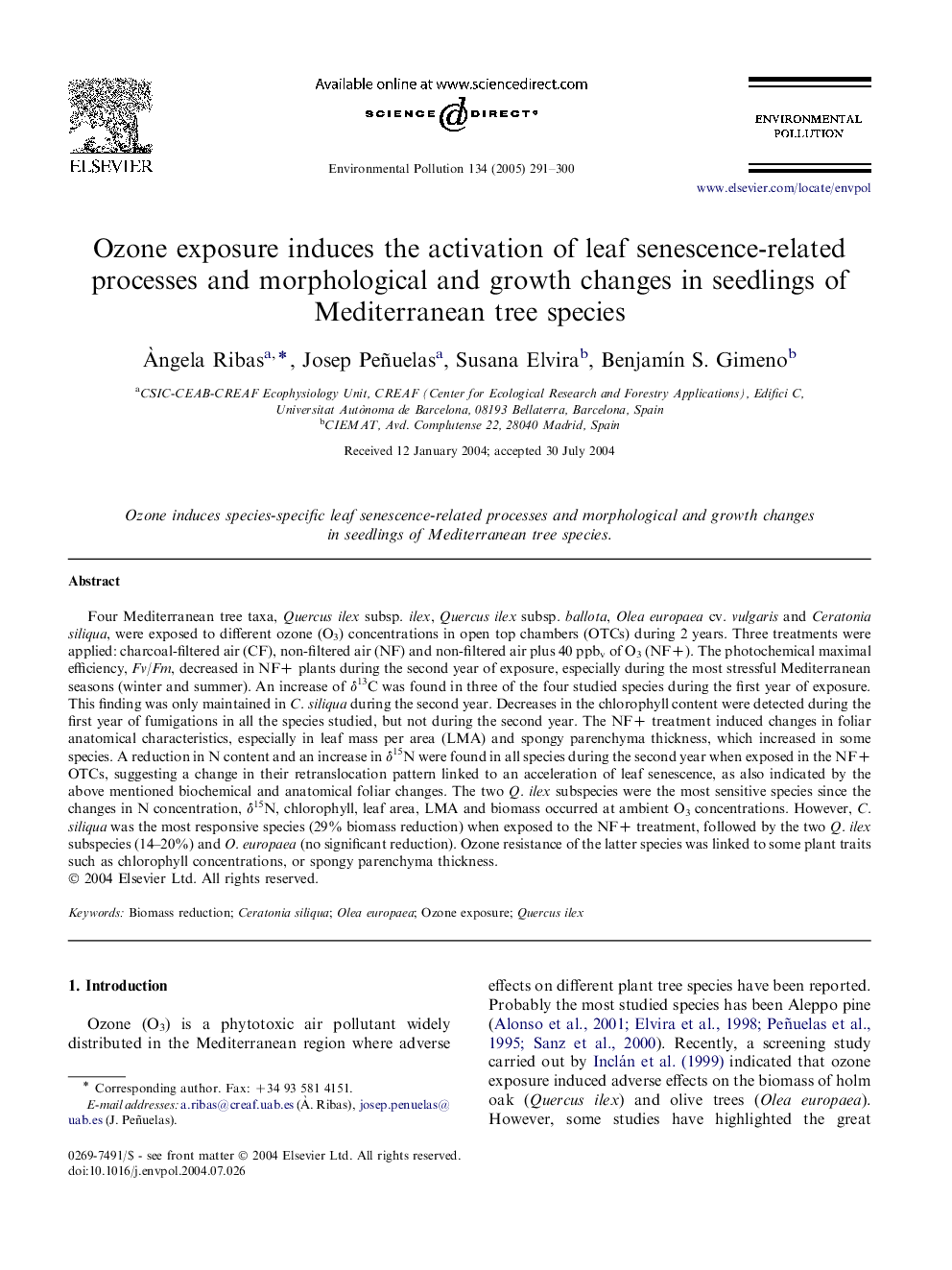| کد مقاله | کد نشریه | سال انتشار | مقاله انگلیسی | نسخه تمام متن |
|---|---|---|---|---|
| 9456578 | 1309203 | 2005 | 10 صفحه PDF | دانلود رایگان |
عنوان انگلیسی مقاله ISI
Ozone exposure induces the activation of leaf senescence-related processes and morphological and growth changes in seedlings of Mediterranean tree species
دانلود مقاله + سفارش ترجمه
دانلود مقاله ISI انگلیسی
رایگان برای ایرانیان
کلمات کلیدی
موضوعات مرتبط
علوم زیستی و بیوفناوری
علوم محیط زیست
شیمی زیست محیطی
پیش نمایش صفحه اول مقاله

چکیده انگلیسی
Four Mediterranean tree taxa, Quercus ilex subsp. ilex, Quercus ilex subsp. ballota, Olea europaea cv. vulgaris and Ceratonia siliqua, were exposed to different ozone (O3) concentrations in open top chambers (OTCs) during 2 years. Three treatments were applied: charcoal-filtered air (CF), non-filtered air (NF) and non-filtered air plus 40 ppbv of O3 (NF+). The photochemical maximal efficiency, Fv/Fm, decreased in NF+ plants during the second year of exposure, especially during the most stressful Mediterranean seasons (winter and summer). An increase of δ13C was found in three of the four studied species during the first year of exposure. This finding was only maintained in C. siliqua during the second year. Decreases in the chlorophyll content were detected during the first year of fumigations in all the species studied, but not during the second year. The NF+ treatment induced changes in foliar anatomical characteristics, especially in leaf mass per area (LMA) and spongy parenchyma thickness, which increased in some species. A reduction in N content and an increase in δ15N were found in all species during the second year when exposed in the NF+ OTCs, suggesting a change in their retranslocation pattern linked to an acceleration of leaf senescence, as also indicated by the above mentioned biochemical and anatomical foliar changes. The two Q. ilex subspecies were the most sensitive species since the changes in N concentration, δ15N, chlorophyll, leaf area, LMA and biomass occurred at ambient O3 concentrations. However, C. siliqua was the most responsive species (29% biomass reduction) when exposed to the NF+ treatment, followed by the two Q. ilex subspecies (14-20%) and O. europaea (no significant reduction). Ozone resistance of the latter species was linked to some plant traits such as chlorophyll concentrations, or spongy parenchyma thickness.
ناشر
Database: Elsevier - ScienceDirect (ساینس دایرکت)
Journal: Environmental Pollution - Volume 134, Issue 2, March 2005, Pages 291-300
Journal: Environmental Pollution - Volume 134, Issue 2, March 2005, Pages 291-300
نویسندگان
Ãngela Ribas, Josep Peñuelas, Susana Elvira, BenjamÃn S. Gimeno,